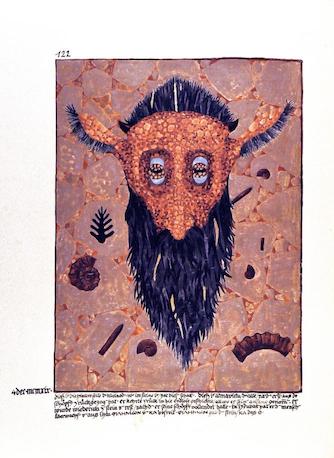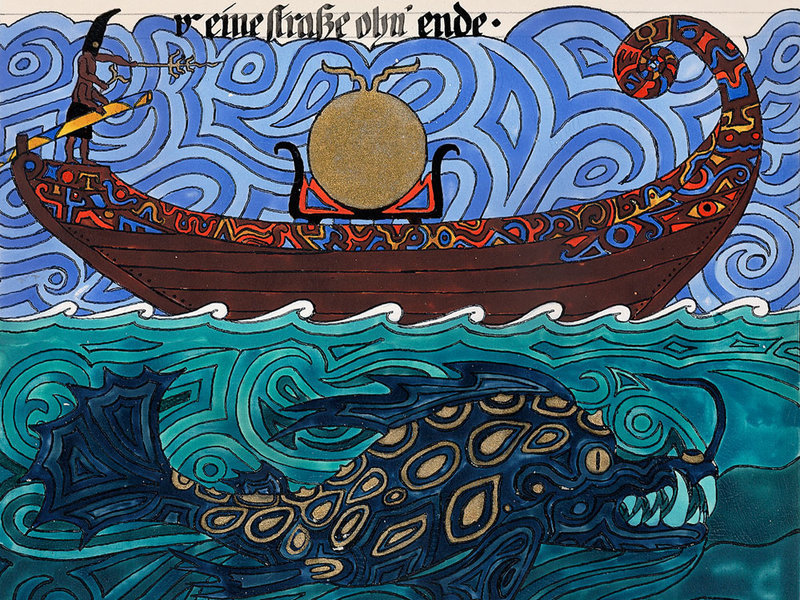Active Imagination
Dr Stephani Stephens, a Jungian expert, took us on a brief journey with our eyes closed, exploring ‘Active Imagination’—the term coined that describes the process developed by Carl Jung that supported his body of work.
The speaker tried to give us a glimpse into Jung’s method of Active Imagination, which is based on the subject envisioning dialogues between oneself and different parts of the psyche. It is the method Jung used for descending into the unconscious, where he contacted figures from the depths that formed the basis for all of his main writings on the Collective Unconscious; this underscored his later analytical psychological method for treating patients.
In the same way that Ezechial warned Jung, (see reference below), Stephens states that getting in touch with the Unconscious Realm can be risky without a skilled guide/mentor, or at least the use of advanced meditation techniques.
Utilising his method of Active Imagination, Jung conjured up figures from the imagination with whom he entered into dialogue.
The Red Book
The Red Book is a large leather‐bound folio manuscript, creatively crafted by Jung between 1915 and about 1930. It recounts and comments upon the author’s imaginative, visionary experiences after his break with Freud and the beginning of a period of creativity and emotional dislocation. Despite being named as the most important work—central in Jung’s oeuvre—it was not published or made otherwise accessible for study until 2009.
It is an unfinished, personal and spiritual account that was, and still is, at odds with the atheistic and scientific direction of society. Jung’s family were concerned that it might not be accepted positively by the public, and kept it locked away until ten years ago.
According to Stephen A. Diamond, the Red Book, is a very personal record of Jung’s complicated, tortuous and lengthy quest to salvage his soul, and a first-hand description of a process that would later fundamentally inform Jung’s approach to treatment that he called Analytical Psychology.
This book was published in 2009 to much acclaim from Jungian scholars and psychologists, as well as followers of his analytical method of treatment.
The Lecture
Dr Stephens spoke well, contacting the audience and keeping our attention throughout. I was even inspired to ask a question at the end. In this lecture, the speaker introduced material from Jung’s biographical work Memories, Dreams, Reflections, and from the posthumously published The Red Book, a beautifully presented and hand inscribed journal of Jung’s encounters with visionary figures during his ‘active imagination’ explorations.
As he focused in this way, Jung was inundated with imagined scenes of global catastrophe—at a time when Europe spoke only of peace and prosperity. In less than a year, beginning in 1914, the First World War ravaged the continent with a bloodthirstiness unknown to history. Jung found vivid symbolic experiences, often of a healing kind, that personified his personal psychology, while revealing the devastating war’s underlying dynamics.
Stephens based her lecture around significant dates relevant to Jung and his work.
The Time Line
1899-1900: Jung attended séances with his cousin Helly as medium, but abandoned them when he discovered anomalies and possible subterfuge in the procedures. However, he went on to write his doctoral thesis based on his witnessing these events, which were very popular at the time, especially in his hometown of Basle.
1902: His PhD was awarded from the University of Zurich for his thesis entitled: On the Psychology and Pathology of So-Called Occult Phenomena.
1907: His first meeting with Freud takes place in Vienna, when they converse for thirteen hours straight, having much in common. However, Jung’s different perspective on the implications of the Eros function, and his interest in the occult will, ultimately, separate them for good.
1909: Jung resigns his post at the Burgholzli Psychiatric Hospital and, during this year, he also visits the USA with Freud.
1911: His cousin Helly dies from tuberculosis in her early thirties. Jung is more and more interested in the psychology of the unconscious. The first Death Dreams begin the following year.
1913: The break with Freud occurs, and Jung’s strongest visions of ‘Rivers of Blood’ spreading throughout Europe begin. The war starts the following year, validating his intuitive visions. A period of personal uncertainty and disorientation begins for Jung.
The Realm of the Dead
Jung explores what he calls the realm of the dead, through descending into the unconscious. However, when he asks Ezechial, one of the figures he meets in the underworld, if he might accompany him and others on a pilgrimage to the Holy Land, Ezechial replies: ‘You cannot join us; you have a body, but we are dead.’

Does Jung present, through his tortuous descent into the Unconscious, a suggestion of survival of Consciousness after death? Is there a plausible case for continuing consciousness after death?

Leave a Reply
You must be logged in to post a comment.